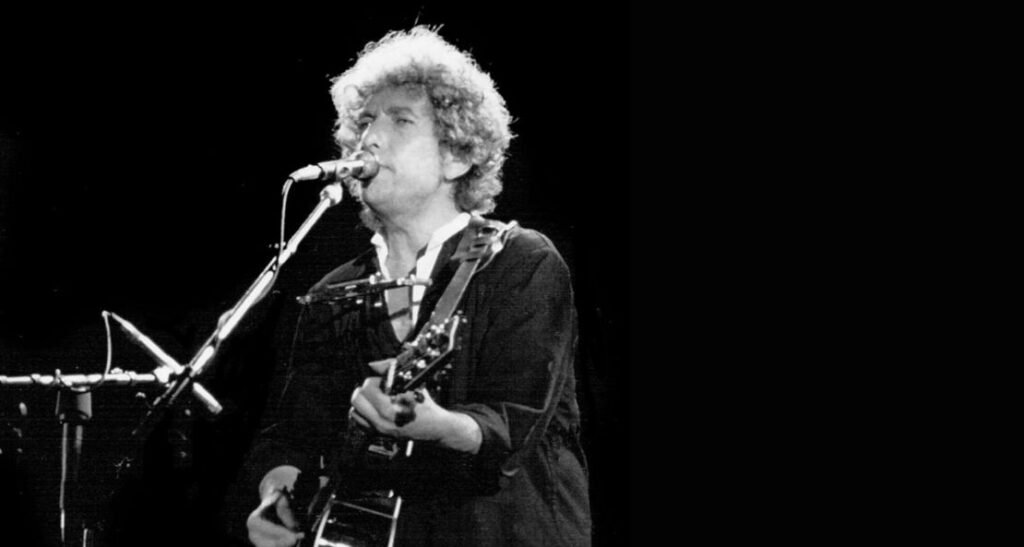After delving into the rebellious spirit of 60s rock and the soulful, polished grooves of Motown, it’s time to switch gears to a genre that took a quieter yet equally powerful approach to changing the world: folk music.
Where rock shouted its defiance and Motown charmed its way into the hearts of listeners, folk music sat you down with an acoustic guitar and a heartfelt story, weaving together lyrics that resonated with the dreams, struggles, and social consciousness of the decade.
Folk music might not have had the electrifying solos of Hendrix or the polished production of Motown, but it had something just as compelling—a direct line to the human experience.
As we explore the top 10 folk hits of the 60s, we’ll see how these simple, unadorned tunes managed to stir emotions, inspire movements, and influence generations.
And yes, we’ll also discover that sometimes all it takes to spark change are three chords and the truth.
1. “Blowin’ in the Wind” by Bob Dylan (1963)
Kicking things off, we have Bob Dylan, who somehow managed to have one foot in the rock world and the other firmly planted in folk.
“Blowin’ in the Wind,” released in 1963, is the quintessential protest song, with its haunting questions that still echo today.
While rock was busy cranking up the volume, Dylan was turning heads with nothing more than a harmonica, an acoustic guitar, and lyrics that made you think.
The song became an anthem for the civil rights movement, proving that folk music could be just as powerful—if not more so—than any electric guitar riff.
2. “The Times They Are A-Changin'” by Bob Dylan (1964)
Dylan strikes again with “The Times They Are A-Changin’,” a song that practically became the unofficial anthem for an entire generation of change-makers.
Released in 1964, this track was like a rallying cry wrapped in a gentle melody.
While Motown was soothing hearts with sweet harmonies and rock was shaking things up with rebellion, Dylan was calmly reminding everyone that change was inevitable—and you’d better get on board or get out of the way.
3. “If I Had a Hammer” by Peter, Paul, and Mary (1962)
Peter, Paul, and Mary brought harmonies so tight they could probably fix your kitchen cabinets.
“If I Had a Hammer,” released in 1962, became a hit not just because of its catchy tune but because it hammered (pun intended) home a message of justice, freedom, and love.
The song was originally written by Pete Seeger and Lee Hays, but Peter, Paul, and Mary’s version brought it into the mainstream, showing that folk music could have mass appeal while still packing a political punch.
4. “Where Have All the Flowers Gone?” by Pete Seeger (1961)
Speaking of Pete Seeger, his song “Where Have All the Flowers Gone?” is a masterclass in simplicity and poignancy.
Released in 1961, it’s a mournful reflection on the futility of war, delivered with Seeger’s signature gentle touch.
While rock was railing against the establishment and Motown was breaking down racial barriers, folk music like this was quietly asking the tough questions, making listeners think long and hard about the world they lived in.
5. “This Land Is Your Land” by Woody Guthrie (1944)
Okay, technically this one’s from the 40s, but Woody Guthrie’s “This Land Is Your Land” gained renewed relevance during the 60s.
It became a sort of folk anthem, especially as the decade’s social movements picked up steam.
Where Motown’s tracks celebrated individual love stories and rock’s hits raged against the machine, Guthrie’s song was about collective ownership and belonging, making it a timeless classic in the folk canon.
6. “Turn! Turn! Turn!” by The Byrds (1965)
Yes, The Byrds are mostly known for their jangly rock sound, but “Turn! Turn! Turn!” is a perfect example of folk-rock at its best.
Released in 1965, the song takes its lyrics straight from the Book of Ecclesiastes, setting them to a melody that’s as soothing as it is reflective.
It’s like a bridge between the introspection of folk and the upbeat energy of rock—a genre-blending masterpiece that still resonates today.
7. “Universal Soldier” by Buffy Sainte-Marie (1964)
Buffy Sainte-Marie’s “Universal Soldier,” released in 1964, is a powerful anti-war anthem that cuts right to the heart of the matter.
Sainte-Marie’s lyrics challenge the notion of the “good soldier” by pointing out the shared responsibility of perpetuating war.
It’s a stark contrast to the feel-good vibes of Motown and the rebellious tones of rock, offering instead a sobering reflection on the human cost of conflict.
8. “Blowin’ in the Wind” by Peter, Paul, and Mary (1963)
Yes, Dylan’s original gets a second nod, this time covered by Peter, Paul, and Mary.
Released in 1963, their version helped bring the song to a wider audience, combining their harmonious vocals with Dylan’s poignant lyrics.
It’s a perfect example of how folk music could transcend the individual artist and become something even bigger—a collective voice for change.
9. “We Shall Overcome” (Various Artists)
“We Shall Overcome” isn’t tied to any one artist, but its impact is undeniable.
Adopted by the civil rights movement, this traditional gospel song became a universal anthem for social justice in the 60s.
Whether sung in church pews, at protest rallies, or by folk artists across the nation, it brought people together in a way few songs could.
It’s the ultimate proof that sometimes the simplest tunes carry the most powerful messages.
10. “The Sound of Silence” by Simon & Garfunkel (1964)
Rounding out our list is Simon & Garfunkel’s “The Sound of Silence,” released in 1964.
This song is a bit like a folk tune that wandered into rock territory, only to discover that it could do just as well there, thank you very much.
With its haunting melody and introspective lyrics, “The Sound of Silence” became an instant classic, proving that folk’s quiet power could still resonate in a world that was getting louder by the day.
Conclusion
Folk music in the 60s might not have had the electrifying riffs of rock or the polished pop sheen of Motown, but it sure knew how to make a statement.
These songs, with their simple melodies and powerful messages, didn’t just capture the mood of the times—they helped shape it.
Whether it was Bob Dylan’s thought-provoking lyrics, Peter, Paul, and Mary’s harmonious anthems, or the enduring power of “We Shall Overcome,” folk music carved out its own vital place in the tapestry of the 60s.
So, while rock was busy making noise and Motown was bringing the groove, folk was quietly—and effectively—changing hearts and minds, one song at a time.
As we continue our journey through the sounds of the 60s, we’ll next dive into the wild world of psychedelia, where things are about to get even more colourful. Buckle up!
You might also like:
- Luna Keller’s Lighter than Before: A Hopeful Indie Folk Anthem of Self-Discovery
- The House of the Rising Sun Lyrics: How The Animals Transformed a Traditional Folk Ballad into a Rock Classic
- Betty, Four Years Later: Taylor Swift’s Folkloric Time Capsule of Teenage Regret
- Plàsi’s Ordna Sig: A Transcendent Folk-Pop Journey


